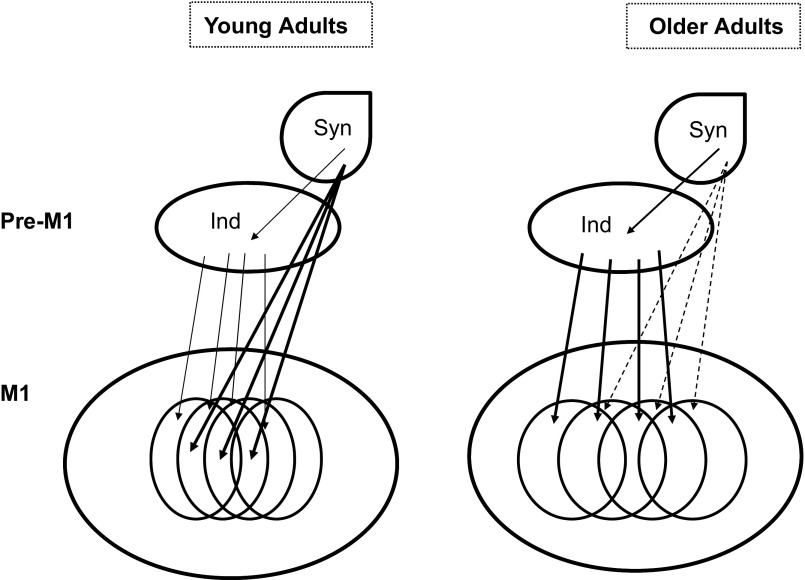Fig. 7.
An illustration of the “back-to-elements” idea using a cartoon of a hypothetical hierarchy with two levels that are defined inputs into the primary motor cortex (M1). Young adults can control individual fingers (Ind), but these projections (thin arrows) are overpowered by the strong synergic control (Syn; thick arrows). In older adults, the trend is reversed: Ind projections become relatively stronger, resulting in better finger individuation (lower enslaving), while Syn control is weaker.

